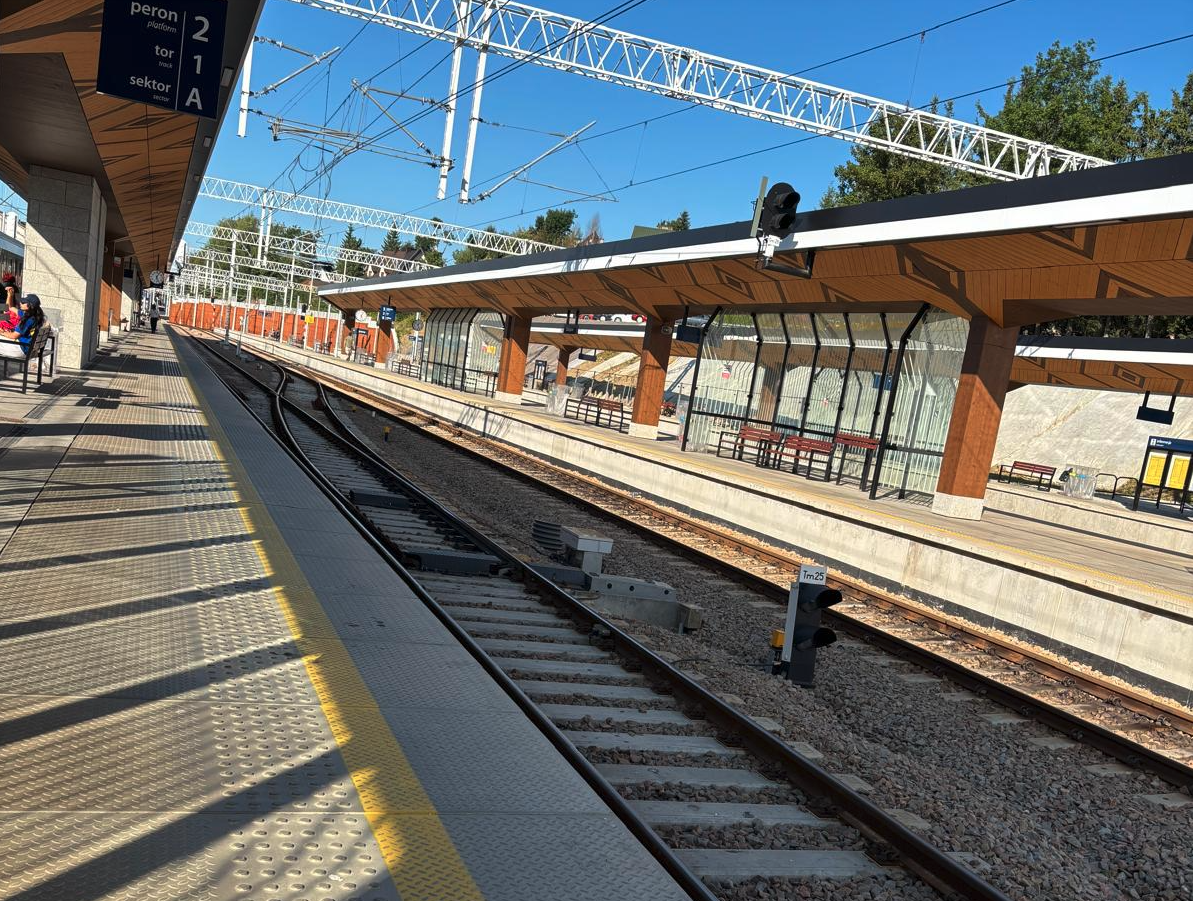Zakopane 2025-10-09
Zakopane Railway Station.
Geographic coordinates 49.301N 19.963E. Elevation 836 m. Address: ul. Chramcówki 35, 34-500 Zakopane.
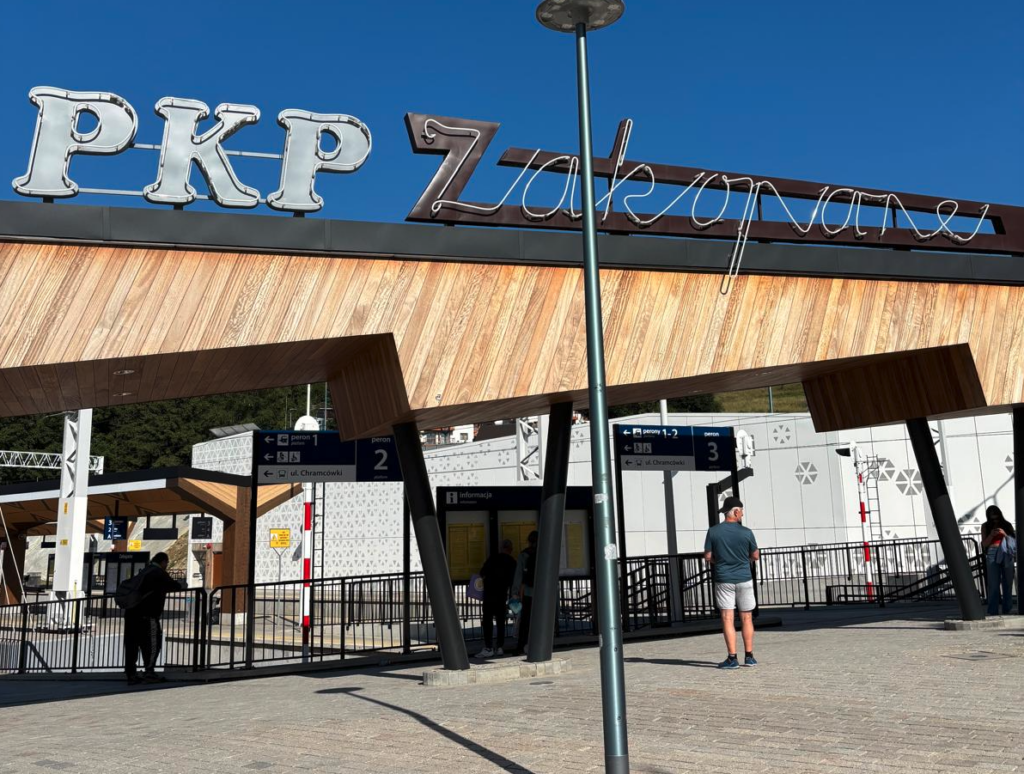
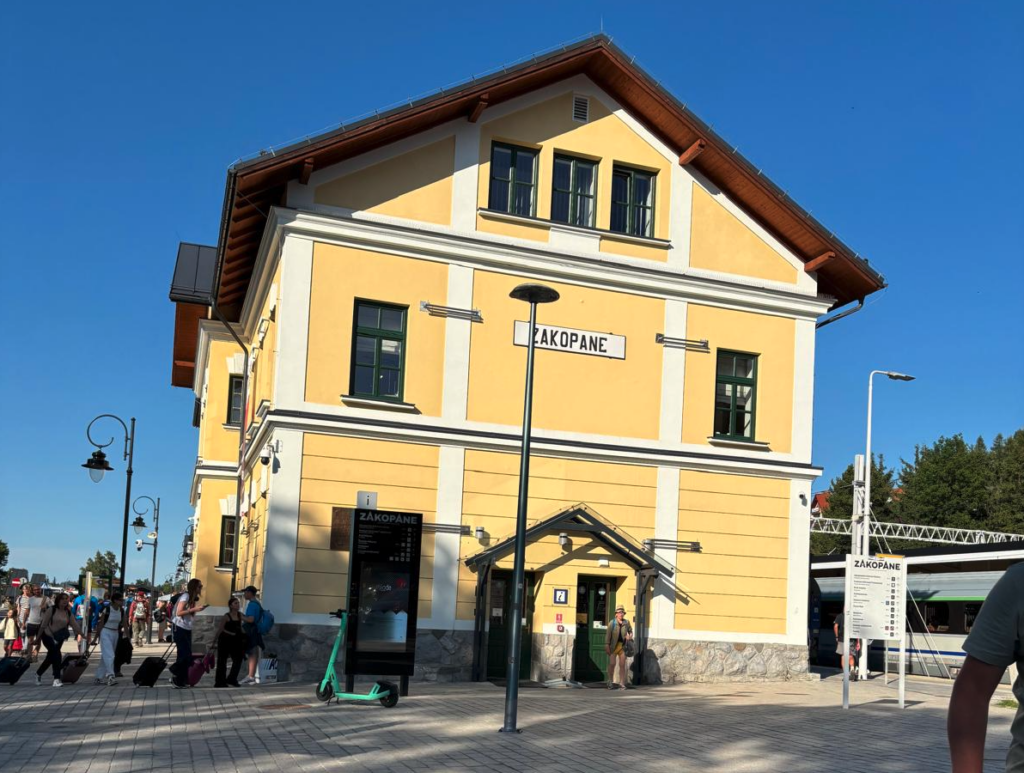
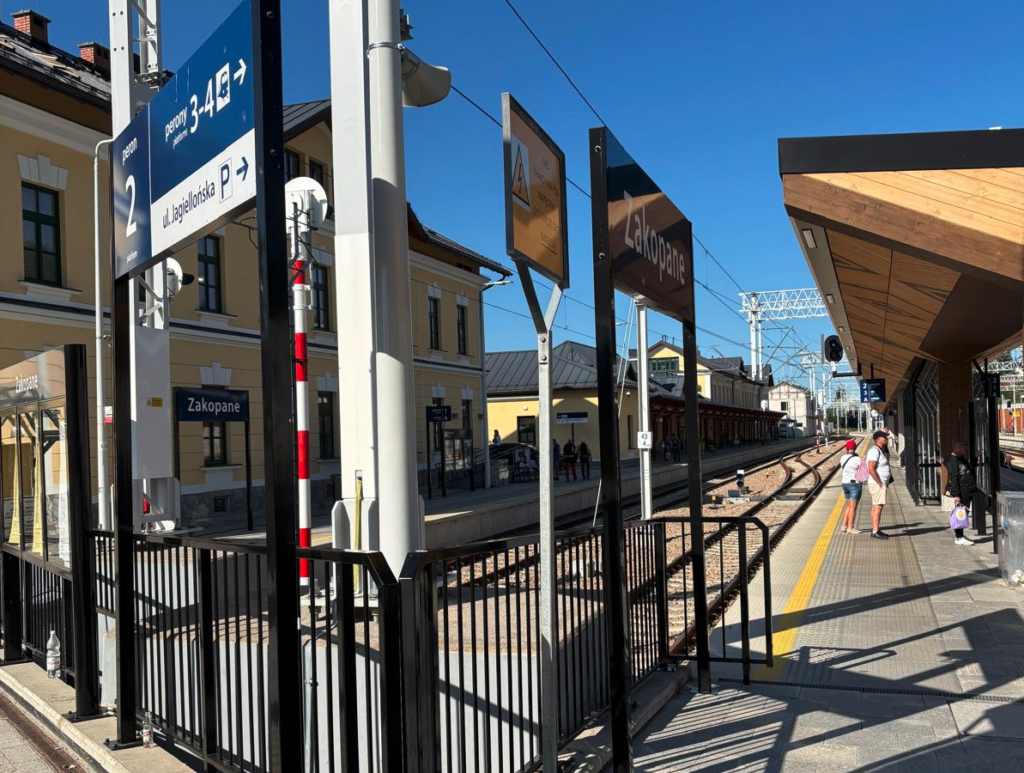
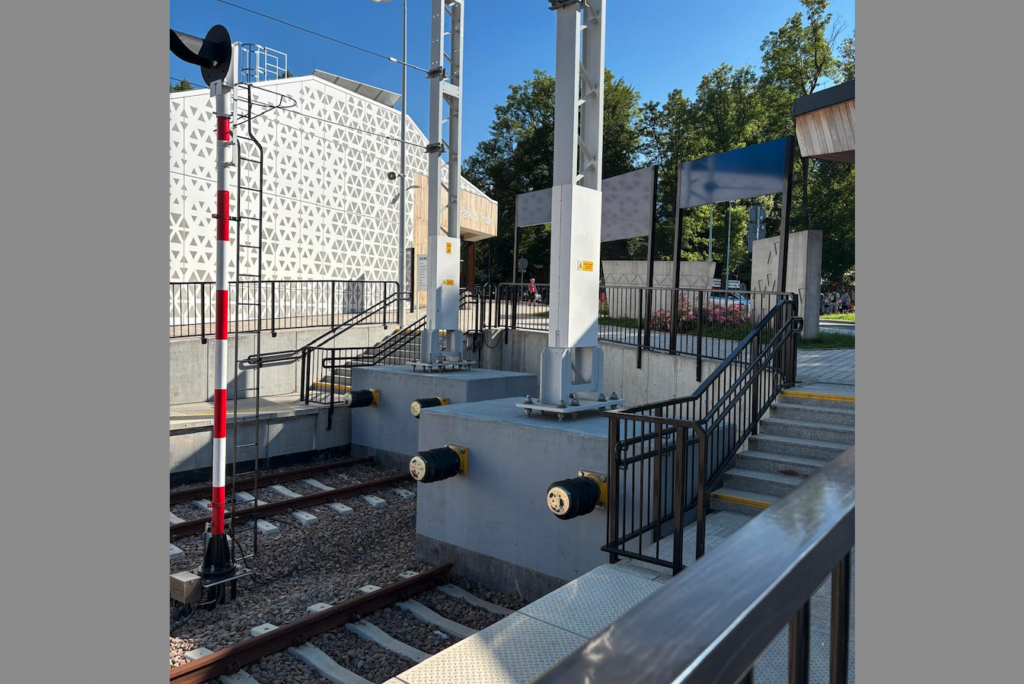
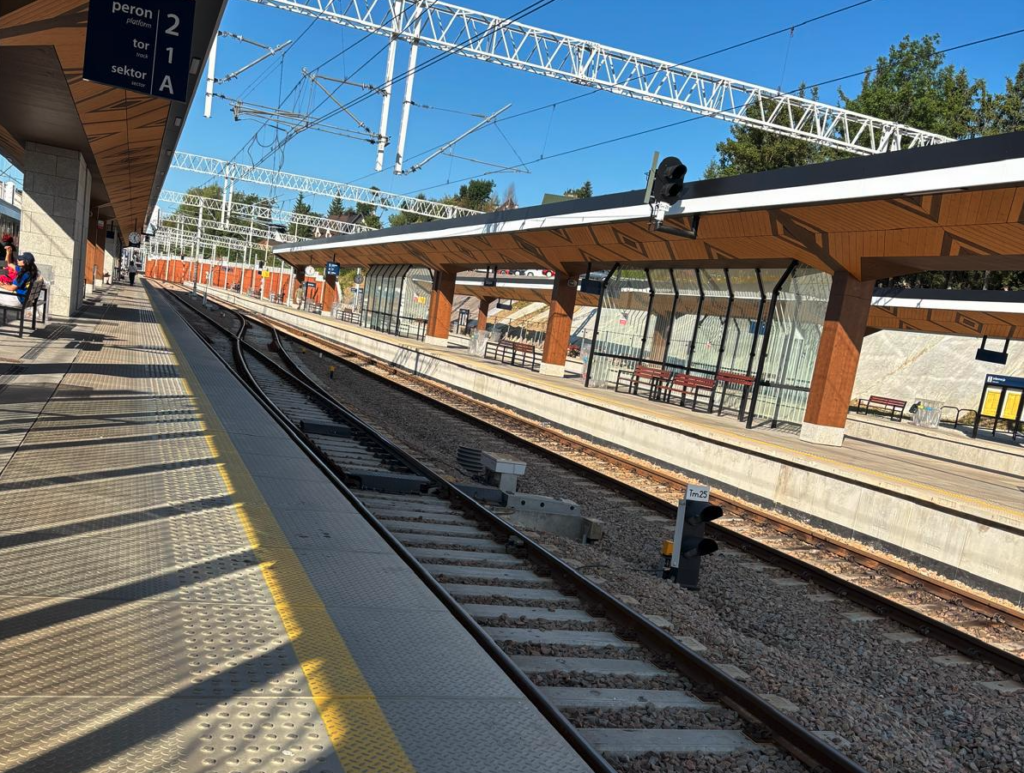
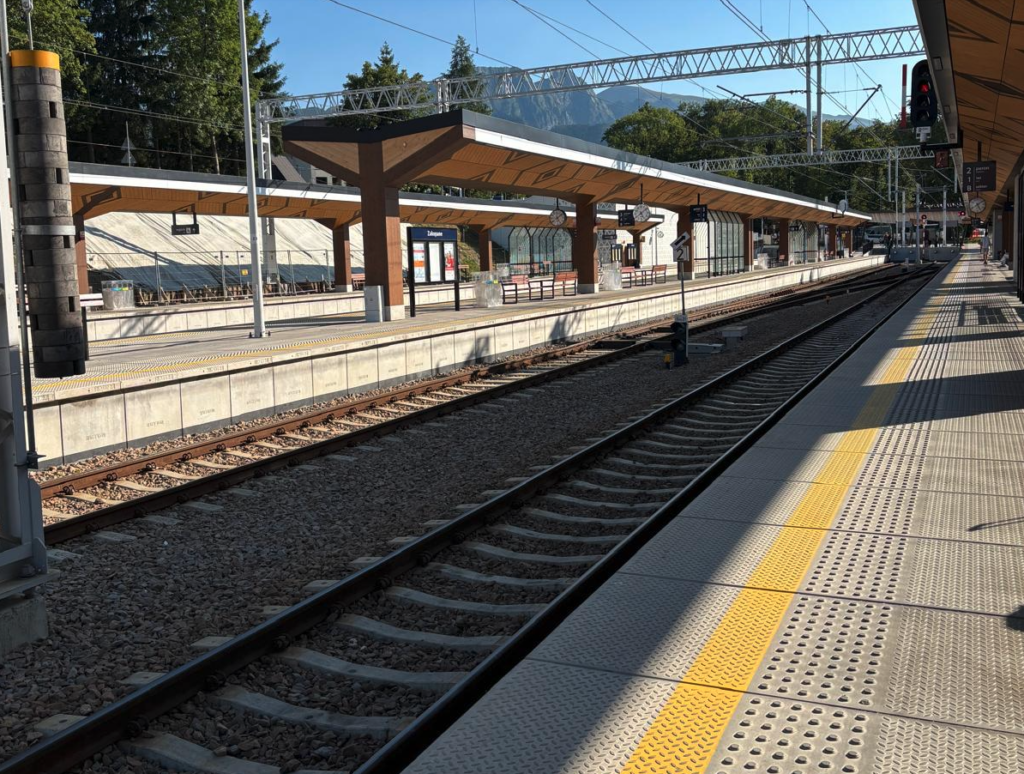
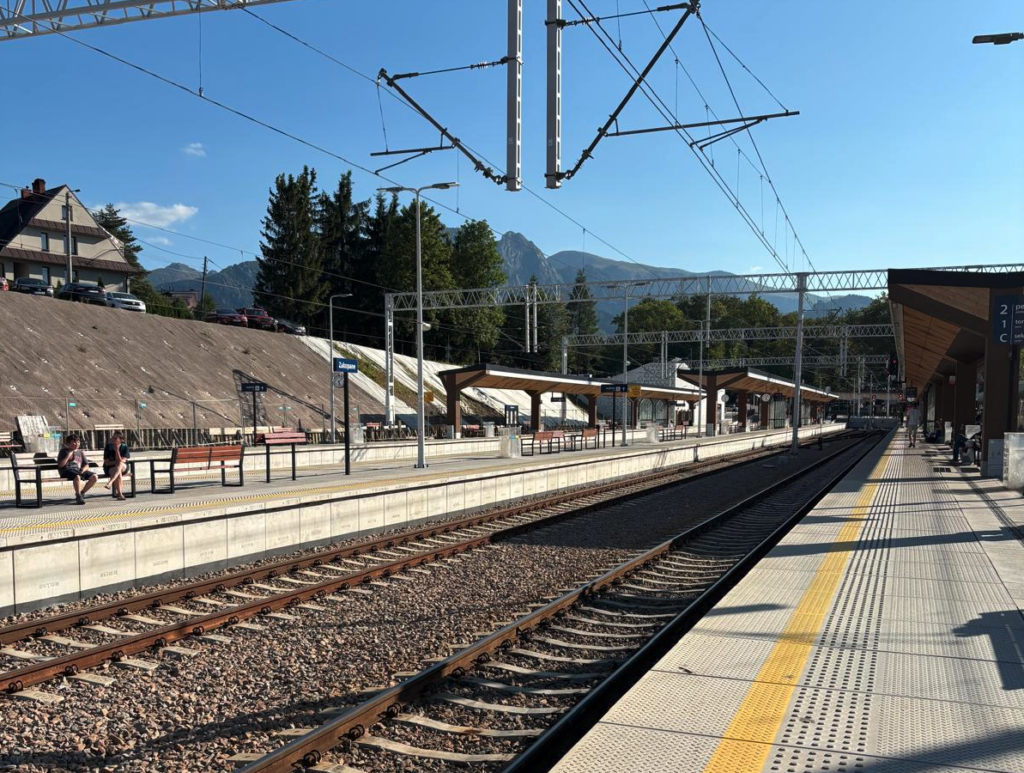
Railway Line No. 99.
Railway Line No. 99 connects Chabówka with Zakopane. The line is 43.785 km long. It runs through Nowy Targ. Stations and stops include Rokiciny Podhalańskie (3.275 km), Raba Wyżna (5.621 km), Sieniawa (10.988 km), Pyzówka (15.052 km), Lasek (18.098 km), Nowy Targ (22.595 km), Szaflary (26.530 km), Biały Dunajec (33.856 km), and Poronin (37.466 km).
Because the railway line was being constructed during the Austrian Partition, a request was made to build an additional railway line from Nowy Targ through Podczerwone to Sucha Hora in Slovakia. The line never fulfilled its intended purpose. In 1948, the line had number 142, and in 1988, number 135a, and finally number 118. The line included stations in Nowy Targ Fabryczny (2.48 km), Ludźmierz (4.40 km), Rogoźnik Podhalański (6.99 km), Czarny Dunajec (11.87 km), Podczerwone (18.01 km), and Suchá Hora. The line was launched on July 1, 1904. In mid-1945, the Podczerwone – Suchá Hora section was closed, and in 1965, this section was dismantled. In 1981, passenger traffic was suspended on the Nowy Targ – Podczerwone section. In 1988, freight traffic was suspended on the Nowy Targ – Podczerwone section. In 1992, the line was dismantled. The Nowy Targ Fabryczny railway station was built for employees of the “Podhale” shoe factory, on line No. 118. It opened on September 28, 1957. A two-story railway station in the Zakopane style was built. In 1988, passenger trains were suspended. The railway line was dismantled in 1992. Line No. 99 officially opened to traffic in 1899. The first passenger train ran from Zakopane to Kraków on October 25, 1899.
The line was built as a single-track mountain railway, with a minimal number of bridges and viaducts. No tunnels were built along the route, significantly reducing construction costs and time. Although a tunnel near the Sieniawska Pass was planned, this type of construction has its drawbacks. The route features numerous railway curves and descents and ascents. Track gradients sometimes exceed 28‰. As a result, traction conditions on route No. 99 are difficult. This causes difficulties in operating trains and drastically reduces their speed. Nevertheless, the drivers (mechanics) manage the route with flying colors.
As a result, not every steam locomotive performed well on the track. Long and heavy steam locomotives performed poorly here, contributing to rail damage. Before the Great War, only a few types of Austrian steam locomotives were permitted to operate on the line. During the interwar period, trains were hauled by former German (Prussian) TKt1 steam locomotives. However, they were structurally flawed and unreliable.
In the early 1930s, the Polish State Railways (PKP) board decided to commission a new locomotive from the Hipolit Cegielski Works in Poznań, designed specifically for the Kraków-Zakopane line. A Polish OKz32 steam tank locomotive was then constructed, which proved well-suited to the difficult conditions of the line. Test runs showed that the locomotive was able to cover the Kraków-Zakopane route, with a passenger train, half an hour faster than the TKt1 locomotive.
Other steam locomotives, tank locomotives, performed well here. The Polish steam locomotive TKt48, built after World War II, performed well on the Zakopane route. Tank locomotives also had the advantage of having the same forward and reverse speed. This was important because the train changed direction three times on the Kraków-Zakopane route. Furthermore, Zakopane never had a locomotive turntable. The OKz32 and TKt48 locomotives pulled passenger trains until 1975, when the line was electrified. Freight trains were usually hauled by Ty2/Ty42 locomotives.
In the 1920s, a TAG Kiel passenger motor car, PKP No. 90003, operated the route. Other motor cars were also tested on the route.
In the 1930s, the Kraków-Zakopane route was covered by “Luxtorpeda” motor cars, the SAx 90080 train. In 1936, this train set the speed record for the Kraków-Zakopane route, completing the journey in 2 hours and 18 minutes. This record remains unbroken to this day. During the German occupation, several “Luxtorpeda” trains were destroyed during the bombing of the Kraków locomotive depot. The Germans used the remaining two trains to transport their asses to Zakopane.
Electrification of Railway Line No. 99. Route No. 99 was electrified (3 kV DC) on December 3, 1975. At that time, all railway lines in Poland were planned to be electrified. However, the collapse of the Polish economy in the 1980s caused this process to be discontinued. The overhead contact line is type C120-2C and is designed for a maximum speed of 110 km/h. The current-carrying capacity is 1,725 A. Between 2017 and 2021, the overhead contact line was replaced with a new one (new poles, power cables, and traction wires). The route is equipped with an SHP system. After the electrification of the route, the EN57 EMU (three-car, including one motor) and their reinforced version, the EN71 (four-car, including two motor) began to dominate the route. Long-distance trains were usually hauled by EU07/EP07 electric locomotives, which also performed well in tight track curves.
The maximum speed on route No. 99 is 80 km/h (2021). Regional trains (Małopolskie Railways, PolRegio) and long-distance trains (InterCity) operate on the route. Freight traffic is sporadic. Another important parameter of the route is the maximum axle load of locomotives and wagons on the tracks. On route No. 99, this value is 177-196 kN. After the route was renovated between 2018 and 2021, these values are as follows: electric locomotives 221 kN, and wagons 196 kN. This is due to the specific nature of mountain routes running along hillsides. Some biographers suggest that this method of railway construction affected quality, which is not true. The Chabówka – Zakopane line is systematically renovated and serves its purpose perfectly.
Zakopane Railway Station.
Over the course of over 120 years, the Zakopane railway station has been rebuilt three times. Between 1937 and 1939, Zakopane Railway Station was expanded. Designed by engineer Zenon Thienel, the station was last renovated between 2016 and 2021. The station buildings were thoroughly renovated, from the basement to the roof. The main station building, divided into a railway station and a bus station, was renovated. The building features a brand new passenger waiting room, luggage storage, ticket offices, and restrooms in the basement.
The railway clinic building was renovated. The interior layout was slightly changed. A Tourist Information Center, a media library, exhibition spaces, and a club room were installed. The Media Library offers a wide selection of books, multimedia, and internet access. A restaurant and café will also be opened. The renovation cost approximately PLN 40 million, including PLN 15 million from EU funds.
The new facility will be a multi-story parking garage located next to the station platforms. The first stage involved tree removal. The parking garage is expected to be operational in 2024. The parking garage will have 150 parking spaces and a grocery store. As part of this work, the wooden gate to the platforms with the neon “PKP Zakopane” sign, as well as the adjacent stands and shops, were demolished in 2021. The famous neon sign and gate were created for the 1968 FIS Nordic World Ski Championships. A new entrance gate is planned, to which a new “PKP Zakopane” neon sign will be restored. As for the “PKP Zakopane” sign itself, it stopped working sometime in the 1990s. Residents collected donations, and the neon sign was renovated in 2015.
Przebudowano układ okolicznych ulic i byłego dworca busów. W sezonie letnim 2021 roku, stacja obsługiwała do 2 000 pasażerów w ciągu doby. W 2021 roku, pociąg relacji Kraków – Zakopane pokonywał w ciągu 3,5 godziny.
In March 2022, PKP (Polish State Railways) once again suspended train services to the Zakopane PKP station. Funding was secured for the renovation of the platforms (extending them to accommodate large trains), tracks, and electric traction. Therefore, the entire station area was fenced off, and renovations began. To avoid disruptions to rail traffic, Spyrkówka station (InterCity holding tracks) was adapted to accommodate passenger trains. The distance between the stations is 1,500 meters. Public transport access to the temporary station is planned. The temporary Spyrkówka station will operate until September 2023. All renovation work on LK No. 99 is intended to reduce the travel time for passenger trains to 2.5 hours.
The station renovation continued until 2024. Four new platforms were built. Platform 1 is a single-edge platform located next to the station building. Platform 2 is an island platform with double edges. This platform is the longest and designed to accommodate the longest InterCity trains. Platform 3 is also an island platform. Platform 4 is a single-edge platform and is a new platform. New shelters have been constructed on the platforms, their design reflecting the architecture of Zakopane. To maximize track length, a new type of reinforced concrete buffer stops have been installed. The tracks at platform 2 allow the locomotive to make a detour around the train. A distinctive shelter-gate has been erected in front of the platforms, reminiscent of the one existing in the 1970s. Each platform can be accessed from this point. The station level, on the southeast side, is bordered by a commercial building with a parking lot and a reinforced slope on which Smrekowa Street is located. Formerly, there were two short sidings in this area. Along with the renovation of the station, the surrounding streets, including the Armii Krajowej roundabout, were renovated.
Written by Karol Placha Hetman
